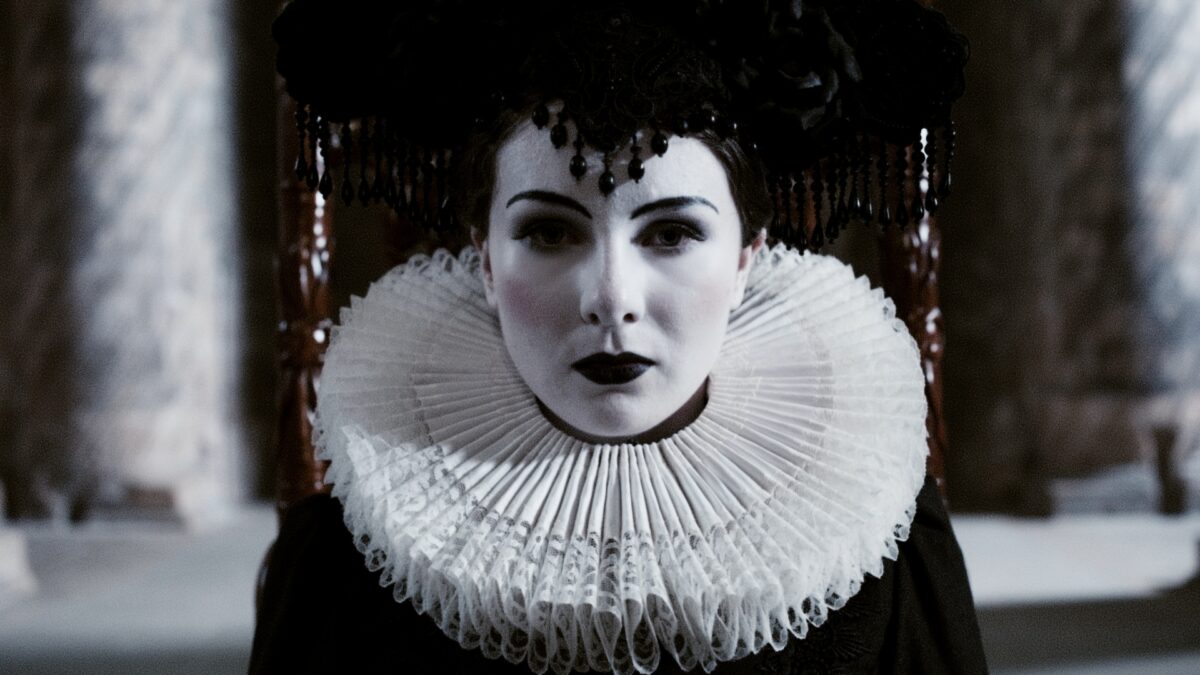
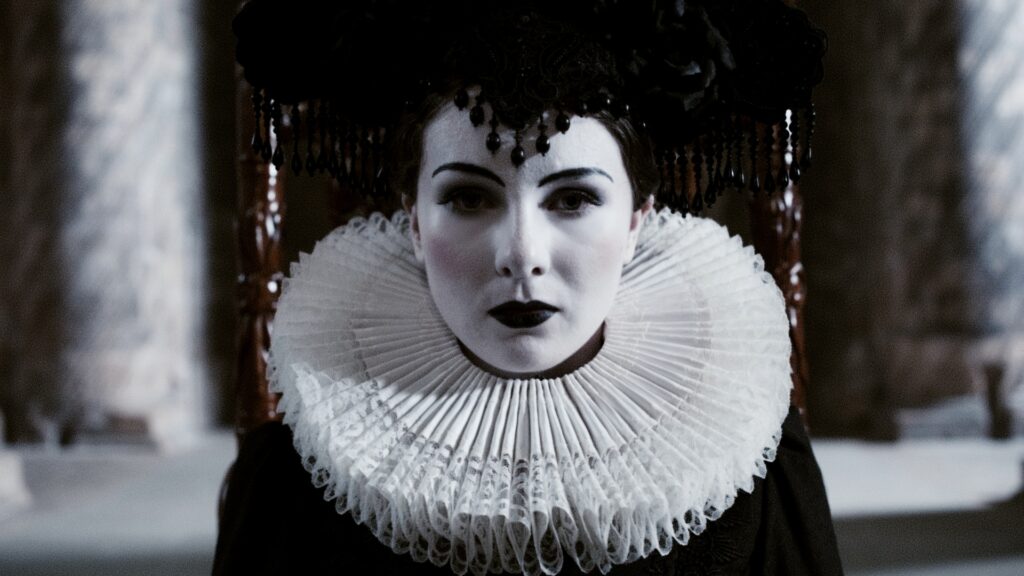
Josh caught up with Megan Tremethick in March about Hex Studios/British Horror Studio’s latest film, The Reign of Queen Ginnarra, a gothic horror-fantasy which premiered at Romford Horror Festival in the UK on March 1st, with the title character played by Megan.
Can you tell us a bit about The Reign of Queen Ginnarra and what audiences can expect from the film?
The Reign of Queen Ginnarra is a gothic horror fantasy that takes audiences into a world where faith, power and madness blur into something terrifyingly real. It is an operatic, character-driven epic inspired by the grandeur of Excalibur and the political intrigue of I, Claudius but with a much darker, Lovecraftian edge. At its heart, it is a psychological descent wrapped in a medieval war film.
It follows Queen Ginnarra, a ruler consumed by visions and an unshakable belief that she has been chosen by dark gods. As she tightens her grip on the throne, her exiled brother Elderon is forced to return and confront the sister he barely recognises. Their battle is not just for a kingdom but for reality itself, as Ginnarra’s unchecked devotion leads her down an apocalyptic path. Unlike many modern fantasy films, The Reign of Queen Ginnarra does not romanticise its world. It drags you into its bleak, mystical depths and challenges you to navigate the madness alongside its characters.

What drew you to the role of Queen Ginnarra and how did you prepare for it?
I was drawn to Queen Ginnarra because she was a character unlike any I had ever had the opportunity to play. I felt nervous at the thought of portraying someone with such a cold, callous exterior. Would I even be able to? I had always played characters who were full of emotion. But I pushed through and soon felt excited by the challenge. Ginnarra was a woman who had done despicable deeds, yet she fascinated me.
To prepare, I had a lengthy conversation with writer and director Lawrie Brewster about Ginnarra’s rise to power and how she became queen, which kept me grounded in her reality during filming. I also researched powerful and formidable rulers, particularly Queen Elizabeth I. In addition, I looked into the psychology behind cult leaders to understand what methods of manipulation Ginnarra may have used and which abilities she gained through the dark gifts bestowed upon her by the mysterious gods, The Old Ones.
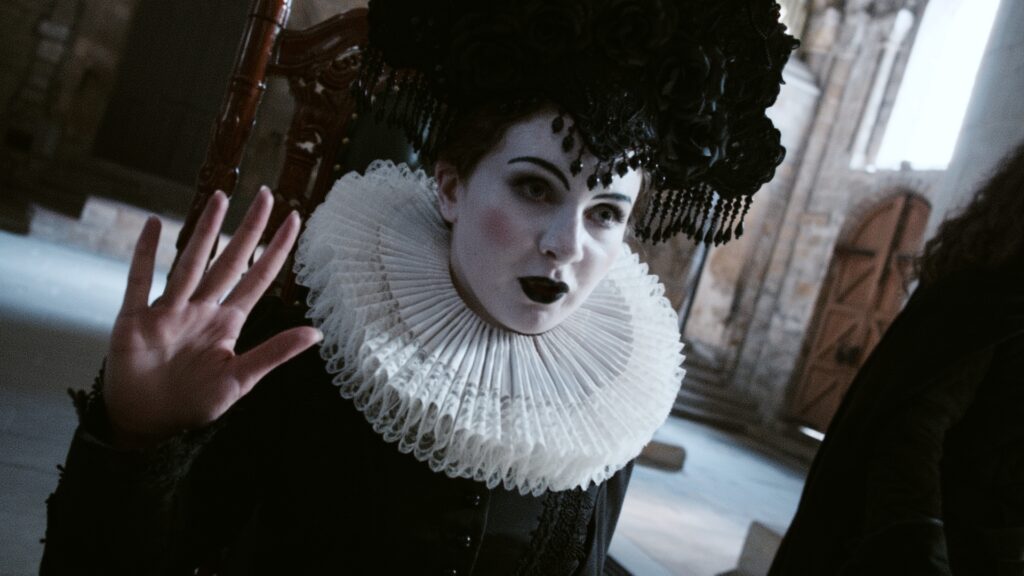
Gothic horror has such a rich history. How does this film pay homage to the classics while bringing something fresh to the genre?
For me, gothic horror is a concoction of grandeur and decay, where power, faith and human fragility give rise to tales of obsession, tragedy and the supernatural. The Reign of Queen Ginnarra draws from that tradition, embracing the tragic figures, oppressive atmospheres and psychological intensity that define the genre. It has the gothic intensity of classic Hammer Horror, the unsettling brutality of Ken Russell’s The Devils and the otherworldly unease of Excalibur. At the same time, it brings something new by blending gothic horror with dark fantasy and cosmic terror.
Lovecraftian horror is rarely explored in a medieval setting, but here, it festers beneath the surface of the story. Instead of supernatural horror confined to haunted castles, the entire kingdom becomes a place of creeping dread and inescapable fate, where reality itself bends under the weight of Ginnarra’s belief in the dark gods. Unlike many modern fantasy films, The Reign of Queen Ginnarra does not indulge in heroism or grandeur. It strips away any sense of adventure and replaces it with psychological torment, stark brutality and an ever-present sense of doom. In that way, it both honours and reshapes gothic horror, delivering a world that feels both eerily familiar and yet mysterious.
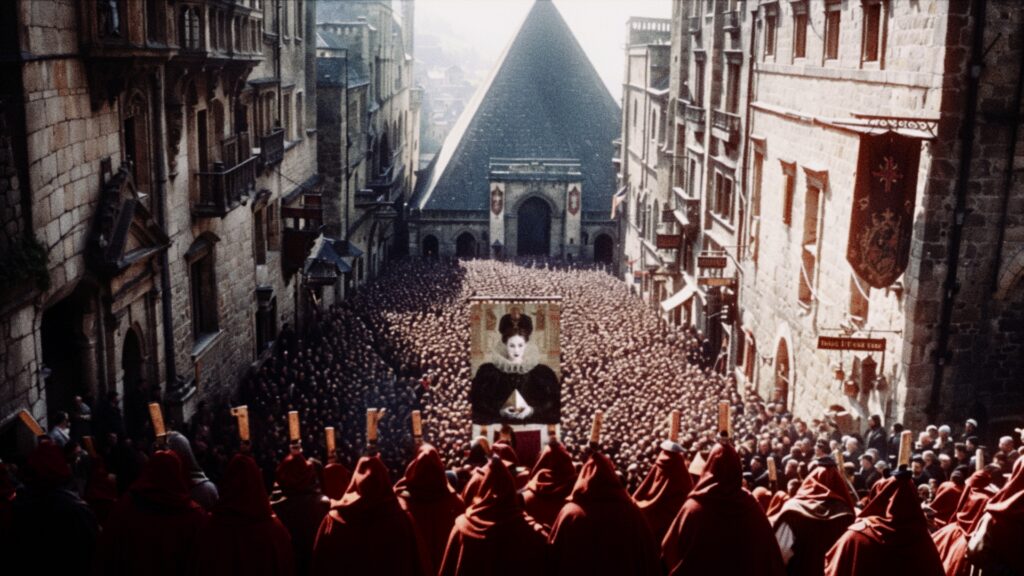
What was the most challenging or rewarding part of portraying the title character?
The most challenging part of playing Queen Ginnarra was probably that in many of her scenes, especially in the throne room, she remains a still, silent presence as her subjects inform her of events occurring throughout the kingdom. She says very little, yet she is always watching, always listening. When an actor plays a role like this, there is a temptation to rely on larger reactions or stronger facial expressions, anything to feel like you are “doing enough acting” in the scene. I knew that if I took Ginnarra in that direction, however, I would instantly kill any sense of mystery or intrigue surrounding her. Instead, as guided by the script, I made sure to be as disciplined as possible, showing as little emotion as I could in these moments so that the audience would be left trying to read her. Once I felt confident in this choice, executing it during filming became one of the most rewarding parts of playing Ginnarra. Discipline can be satisfying.
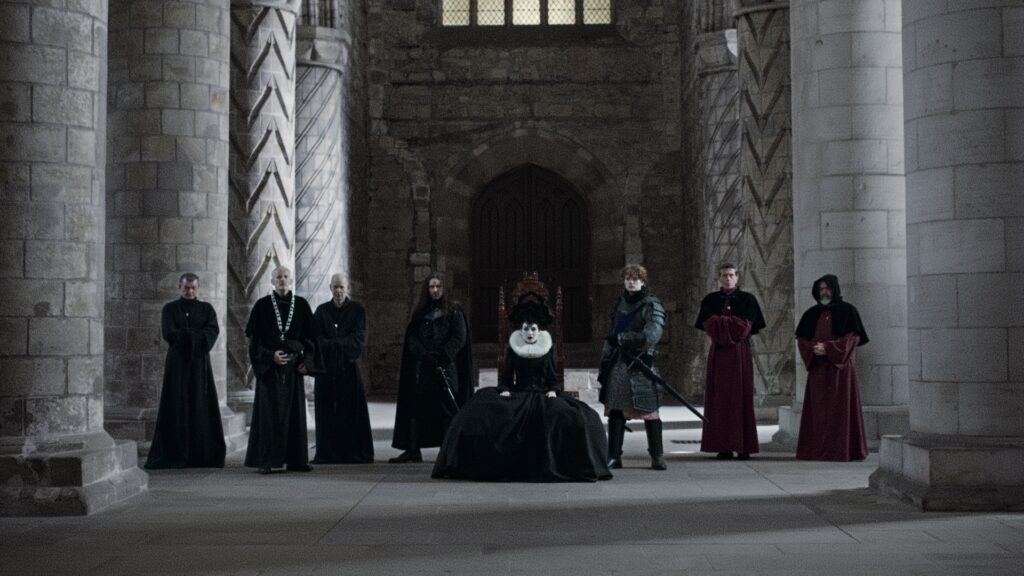
How did your collaboration with Hex Studios British Horror Studio come about?
My collaboration with Hex Studios British Horror Studio began in an unexpected way. I first backed their Kickstarter for The Black Gloves. At the time, I just admired their work, drawn to their unique style of filmmaking. A few years later, I met the team in the British Pavilion tent at the Cannes Film Festival, which was surreal after having followed their films for a while. That meeting led to an audition for the role of a black-clad assassin in one of their projects, which I landed. From there, I kept working with them and the rest is history.
What do you think makes Hex Studios stand out in the indie horror scene?
What makes Hex Studios stand out in the indie horror scene is how grassroots it is. It is not just a production company, it is a growing community of independent creatives at all experience levels, coming together to make bold, original horror films. Unlike many indie studios that rely solely on external funding or industry connections, Hex is actively building its own network of supporters who are genuinely passionate about the work. They engage directly with their audience, whether through crowdfunding, exclusive behind-the-scenes content or opportunities for new and emerging creatives to get involved. This is through their free to join Patreon page, and I’d definitely recommend creatives who are interested in what we do to join it. It is rare to see a company so committed to cultivating a movement around independent horror, not just making films in isolation. That dedication makes their projects feel genuine and artist-driven, and it is a huge part of what makes working with them so special.
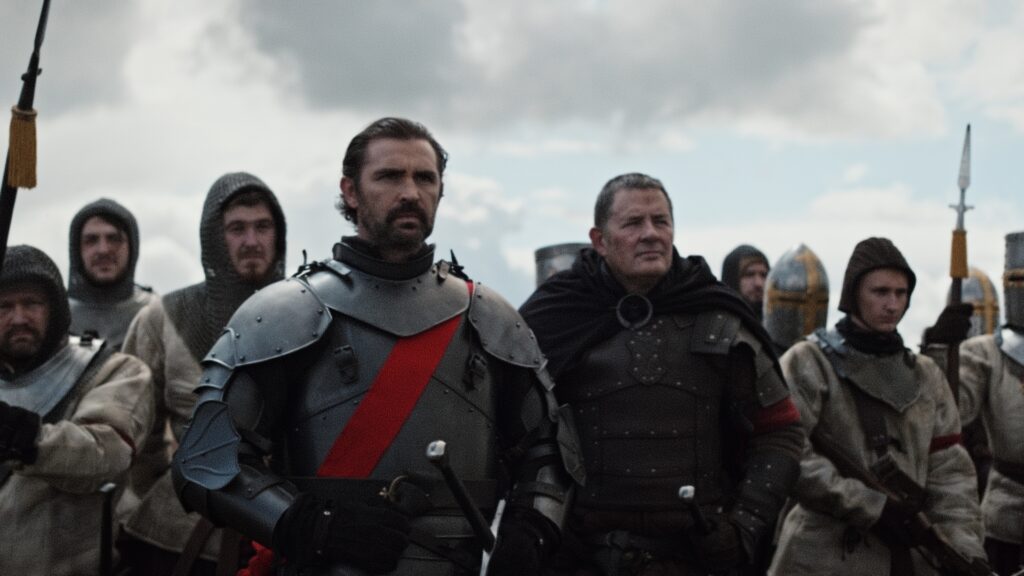
Are there any other exciting projects in the pipeline that you can tease?
I have a lot of exciting projects in the works right now, and I can’t wait for people to see what’s coming next! One of them is Spoiling You, an ASMR horror film that uses sound, silence and psychological tension to create an unnerving experience. It’s inspired by the eerie, slow-building dread of classic J-Horror, particularly the work of Takashi Miike’s Audition and Sion Sono’s Suicide Club. The way those films draw audiences in with quiet intimacy before spiralling into full-blown terror has had a huge influence on this project, and I think horror fans will find it deeply unsettling in a way they might not expect. Spoiling You also stars Laurence R. Harvey, known for his unforgettable performances in The Human Centipede films.
I’m also involved in Black Chariot, a project that’s shaping up to be something really special. It’s a dark, atmospheric film with a unique vision, and I’m thrilled to be part of it. Like Spoiling You, it also stars Laurence R. Harvey, adding his signature unsettling presence to the film.
Then there’s In The Grip of Terror, a horror anthology with a truly historic significance as it is the first Amicus Production in over 20 years. Amicus is legendary in British horror history, and to be part of the studio’s return is an incredible experience. The film brings together some seriously chilling stories, each with its own distinct style and eerie tone. It also features an amazing cast, including Laurence R. Harvey and Golden Globe nominee Jane Merrow, whose work in classic genre films makes her the perfect fit for an Amicus revival.
On top of all that, I’m incredibly excited about For We Are Many 2, the upcoming sequel to British Horror Studio’s cult anthology For We Are Many. This time, I had the chance to step behind the camera and direct three short film segments, which was an amazing experience. I’ve certainly ‘caught the bug’ for directing, and I can’t wait to see how audiences respond to the shorts. It’s a really exciting time, and I feel lucky to be working on so many different kinds of horror projects.
As an actress and filmmaker, what draws you to horror and particularly gothic horror?
I’ve always been drawn to horror, particularly gothic horror, because it so often offers rich, complex characters that are a joy to play. The genre embraces mystery, intensity and psychological depth in a way that allows actors to fully immerse themselves in their roles. Gothic stories in particular seem to create mysterious, enticing characters who are layered with drama, tragedy and intrigue, which makes them incredibly fulfilling to portray.
There’s also something about the romance and melancholy of gothic horror that fascinates me. It’s a genre that blends the beautiful with the unsettling, often weaving together love, obsession, grief and the supernatural in a way that feels timeless. From a purely visual perspective, period-set gothic films are breathtaking. The stunning locations, elaborate costumes and atmospheric cinematography all add to the immersive experience, making it even more exciting as an actor.
As a director, I’m just as excited by gothic horror as I am as an actress. The genre has such a rich history and stylistic potential, and I would love to explore it even more deeply in future projects of my own. The combination of heightened emotion, visual storytelling and psychological depth makes it an endlessly fascinating space to create in.
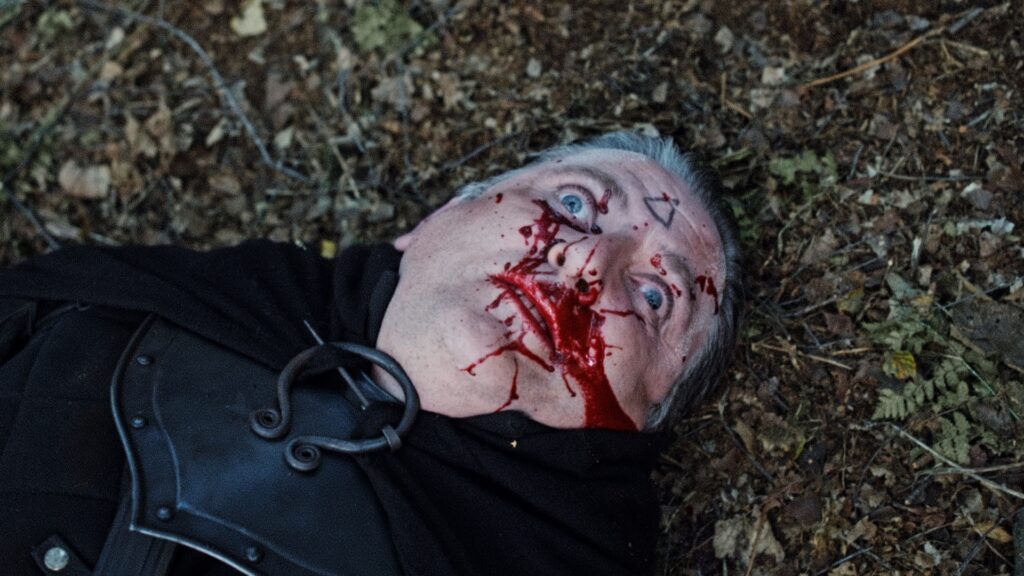
Do you have any personal horror inspirations—actors, directors or films that shaped your love for the genre?
For Spoiling You, the directors who inspired me the most are Sion Sono and Takashi Miike. Their films are masterful at building suspense, often lulling the audience into a false sense of security before delivering shocking moments that feel both earned and deeply unsettling. What I admire most about their work is their ability to explore deeper themes, whether it’s trauma, obsession or human depravity, while still leaving room for nuance and interpretation rather than spelling everything out. That balance between visceral impact and intellectual depth is something I aim for in my own work.
When it comes to horror actresses, I have immense admiration for Ingrid Pitt, especially for her role in Countess Dracula. She had such a commanding screen presence – seductive yet terrifying – and brought a real sense of tragic depth to the role. At the same time, she kept an element of fun, fully embracing the camp and theatricality of classic gothic horror. Charlotte Rampling is another major inspiration, particularly for her performance in Asylum, the classic Amicus horror anthology. She has a way of portraying characters who feel haunted, complex and psychologically unravelled, bringing a quiet intensity to the screen that lingers with you.
Her ability to convey inner turmoil with subtlety is something I find fascinating in psychological horror. Deborah Kerr in The Innocents is another standout. Her performance is so emotionally raw, and she captures the slow unraveling of a woman questioning her own reality with incredible precision. For a more modern inspiration, Mia Goth is someone whose work I deeply admire. She brings an unfiltered intensity to her performances, and her ability to navigate between fragility and full-blown madness, as seen in Pearl particularly, is nothing short of mesmerising. She’s fearless, and that’s something I strive for in my own approach to horror.
What’s your dream horror project or role?
My current dream role would be to play a gothic heroine in a period-set psychological horror. A woman trapped in an isolated, crumbling estate where secrets lurk in every shadow. Whether she is being haunted by spirits or by her own unraveling mind, her world teeters on the brink of collapse, both physically and psychologically. I love the idea of a character who is intelligent, emotionally complex and deeply flawed yet resilient. She would navigate a story filled with dread, mystery and slow-burning terror. Something in the vein of The Innocents, Rebecca or The Others, where atmosphere and performance drive the horror just as much as the supernatural, if the horror is even supernatural at all.
The Reign of Queen Ginnarra just premiered at Romford Horror Festival – how was the experience?
The Reign of Queen Ginnarra premiere at Romford Horror Festival was an unforgettable experience! One of the biggest highlights was getting to spend time with the amazing team at British Horror Studio, including Lawrie Brewster and Sarah Daly, both co-owners of BHS, as well as my Queen Ginnarra co-stars Dorian Ashbourne and Novarro Ramon. I also had a great time with our brilliant production assistant Oliver Revie, who has, without a doubt, the darkest sense of humour known to man.
It was also wonderful to catch up with the amazing festival organisers, Spencer Hawken and Natalie Bays. Spencer is leading the incredible Lumiere project, which will transform the former Premiere Cinema in Romford into a dynamic entertainment venue. The vision behind Lumiere is truly exciting as it will showcase a mix of mainstream, independent and classic cinema, live performances and community-driven events, creating a fresh alternative to traditional cinemas. Seeing how much passion is going into this project is so inspiring!
Another highlight was meeting so many fantastic actors and filmmakers from the British independent scene, some of whom I had never met before. And of course, it was a joy to see The Reign of Queen Ginnarra on the big screen with a festival audience! To make the screenings extra special, I also performed a live monologue in character as Queen Ginnarra before each showing – which was a bit nerve-wracking but a lot of fun!
Overall, it was an incredible festival, and I feel so grateful to have been part of it!
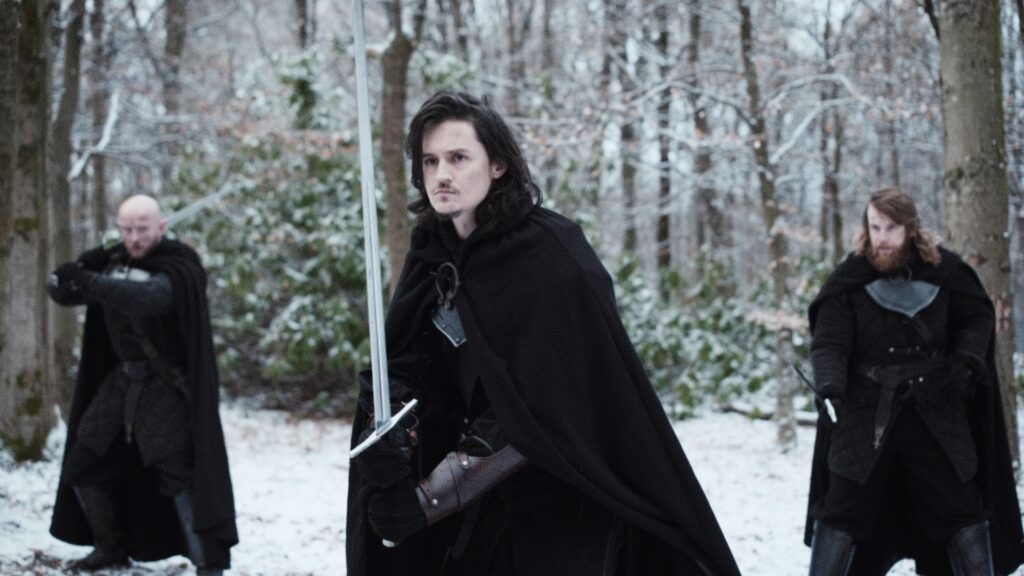
How important do you think horror festivals are for independent filmmakers and actors?
Horror festivals are essential for independent filmmakers and actors. They provide a space where creativity thrives, and indie horror can connect with passionate audiences who truly appreciate the genre. More than just screenings, festivals foster a strong sense of community where filmmakers and actors can form lasting collaborations and support each other’s work. Indie filmmaking can be isolating, but horror festivals remind us that we’re part of something bigger. These events also help actors and filmmakers build their own audience, people who will follow their careers, engage with their work and champion independent horror. Horror fans are loyal and invested, making festivals the perfect place to grow as an artist. For anyone in indie horror, festivals aren’t just opportunities. They’re homes for creative risk-taking, connection and artistic growth.
What do you hope audiences take away from The Reign of Queen Ginnarra?
I hope audiences come away from The Reign of Queen Ginnarra feeling like they have experienced something operatic and uncompromising. This is not a story about heroes and villains in the traditional sense. Ginnarra is ruthless, terrifying and absolutely convinced of her own divine purpose. But while she is undeniably evil, the world around her is just as treacherous. No one is innocent, and I want the audience to constantly question who they can trust. Loyalties shift, motivations remain hidden, and even those who oppose Ginnarra may have their own dangerous ambitions.
BHS Patreon: https://www.patreon.com/c/britishhorrorstudio/home
Megan Tremethick Instagram: https://www.instagram.com/megantremethick/

